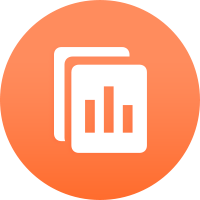
2025-06-26 20:15
IndustryTrade Cost Optimization in Fx by AI
#CommunityAMA
Trade Cost Optimization
Discussion
AI optimizes trade costs in forex trading by analyzing and minimizing expenses such as spreads, commissions, and slippage. It evaluates brokers, trading platforms, and market conditions to identify cost-efficient opportunities, ensuring traders maximize returns. For example, AI can select brokers with the tightest spreads for high-frequency trading or time trades to avoid periods of high volatility that increase slippage. By processing real-time data, AI dynamically adjusts strategies to reduce transaction costs, which is critical in forex where margins can be thin.
Advantages
Cost Reduction: AI identifies brokers with low spreads and commissions, saving significant costs over time, especially for high-volume traders.
Improved Execution: AI optimizes trade timing to minimize slippage, ensuring trades are executed at desired prices.
Scalability: Automatically adjusts cost-saving strategies across different currency pairs and market conditions.
Data-Driven Decisions: Analyzes historical and real-time data to recommend cost-efficient brokers or trading times.
Disadvantages
Broker Dependency: AI recommendations may be limited by the quality of broker data or hidden fees not captured in analysis.
Complexity: Implementing AI-driven cost optimization may require technical expertise and robust infrastructure.
Market Volatility Risks: Cost-focused strategies may prioritize low-cost brokers over execution quality, leading to losses in volatile markets.
Over-Optimization: Excessive focus on cost reduction can limit trading opportunities or lead to suboptimal strategies.
Recommendations
Cross-Check Broker Data: Use AI to compare brokers but manually verify their reliability, regulation, and hidden fees via platforms like https://help.x.com/en/using-x/x-premium for community insights.
Balance Cost and Quality: Prioritize brokers with both low costs and high execution quality to avoid poor trade outcomes.
Monitor Market Conditions: Use AI to adjust trade timing based on volatility forecasts, reducing slippage during turbulent periods.
Leverage Scalable Tools: Implement cloud-based AI solutions to handle large datasets efficiently, ensuring real-time cost optimization.
Regular Updates: Continuously update AI models to reflect changes in broker offerings, market conditions, and trading costs.
Conclusion
AI-driven trade cost optimization significantly enhances profitability in forex trading by minimizing expenses like spreads, commissions, and slippage. It empowers traders to make data-driven decisions, selecting cost-efficient brokers and optimizing trade execution. However, traders must balance cost savings with execution quality and remain vigilant about market volatility and broker reliability. Combining AI tools with manual oversight and regular updates ensures sustained cost efficiency without compromising trading performance. For advanced AI tools to support cost optimization, traders can explore platforms like https://x.ai/api, though specific details on costs or features should be verified directly.
Like 0
playen
Trader
Hot content
Industry
Event-A comment a day,Keep rewards worthy up to$27
Industry
Nigeria Event Giveaway-Win₦5000 Mobilephone Credit
Industry
Nigeria Event Giveaway-Win ₦2500 MobilePhoneCredit
Industry
South Africa Event-Come&Win 240ZAR Phone Credit
Industry
Nigeria Event-Discuss Forex&Win2500NGN PhoneCredit
Industry
[Nigeria Event]Discuss&win 2500 Naira Phone Credit
Forum category

Platform

Exhibition

Agent

Recruitment

EA

Industry

Market

Index
Trade Cost Optimization in Fx by AI
 Vietnam | 2025-06-26 20:15
Vietnam | 2025-06-26 20:15#CommunityAMA
Trade Cost Optimization
Discussion
AI optimizes trade costs in forex trading by analyzing and minimizing expenses such as spreads, commissions, and slippage. It evaluates brokers, trading platforms, and market conditions to identify cost-efficient opportunities, ensuring traders maximize returns. For example, AI can select brokers with the tightest spreads for high-frequency trading or time trades to avoid periods of high volatility that increase slippage. By processing real-time data, AI dynamically adjusts strategies to reduce transaction costs, which is critical in forex where margins can be thin.
Advantages
Cost Reduction: AI identifies brokers with low spreads and commissions, saving significant costs over time, especially for high-volume traders.
Improved Execution: AI optimizes trade timing to minimize slippage, ensuring trades are executed at desired prices.
Scalability: Automatically adjusts cost-saving strategies across different currency pairs and market conditions.
Data-Driven Decisions: Analyzes historical and real-time data to recommend cost-efficient brokers or trading times.
Disadvantages
Broker Dependency: AI recommendations may be limited by the quality of broker data or hidden fees not captured in analysis.
Complexity: Implementing AI-driven cost optimization may require technical expertise and robust infrastructure.
Market Volatility Risks: Cost-focused strategies may prioritize low-cost brokers over execution quality, leading to losses in volatile markets.
Over-Optimization: Excessive focus on cost reduction can limit trading opportunities or lead to suboptimal strategies.
Recommendations
Cross-Check Broker Data: Use AI to compare brokers but manually verify their reliability, regulation, and hidden fees via platforms like https://help.x.com/en/using-x/x-premium for community insights.
Balance Cost and Quality: Prioritize brokers with both low costs and high execution quality to avoid poor trade outcomes.
Monitor Market Conditions: Use AI to adjust trade timing based on volatility forecasts, reducing slippage during turbulent periods.
Leverage Scalable Tools: Implement cloud-based AI solutions to handle large datasets efficiently, ensuring real-time cost optimization.
Regular Updates: Continuously update AI models to reflect changes in broker offerings, market conditions, and trading costs.
Conclusion
AI-driven trade cost optimization significantly enhances profitability in forex trading by minimizing expenses like spreads, commissions, and slippage. It empowers traders to make data-driven decisions, selecting cost-efficient brokers and optimizing trade execution. However, traders must balance cost savings with execution quality and remain vigilant about market volatility and broker reliability. Combining AI tools with manual oversight and regular updates ensures sustained cost efficiency without compromising trading performance. For advanced AI tools to support cost optimization, traders can explore platforms like https://x.ai/api, though specific details on costs or features should be verified directly.
Like 0
I want to comment, too
Submit
0Comments

There is no comment yet. Make the first one.

Submit
There is no comment yet. Make the first one.